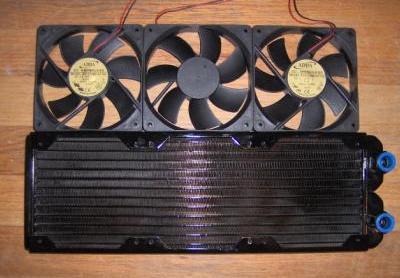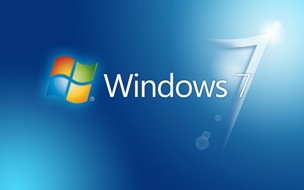Nvidia or AMD, which is better and ultimately, which graphics cards should you be buying in 2022? Both brands will get you an awesome GPU, but there are loads of different pros and cons to each. Ultimately, different cards will indeed suit different people.
Nvidia absolutely wins and crushes AMD in every category across the board, low end to high end. If we compare everything at MSRP, and even then some of those cards have some VRAM else that could be a concern, especially with like a 3070 Ti and 3070 with only 8GB. That’s a bit concerning. I’m less concerned about the 3080 with 10GB, but even then could be a bit of an issue down the road, especially for 4K.
However, like I said, I really do think that if you compare the GPUs at MSRP, which is a flat out pretty much win across the board at all price brackets for Nvidia, then yeah, great! Except that MSRP is absolutely meaningless over 2021, and probably extending at least into the first part of 2022.
AMD vs. Nvidia: Comparison & Suggestion
Well, for me, I spent all of 2021. Well, I mean, okay, I finally ended up buying at the end of August, almost the beginning of September, and I had an RTX 2070 and I wanted to upgrade it. And for me personally, what it ended up winning? Well, I wanted a 3080, but I ended up with an RX 6800 XT.
But why did I do that? Well, I actually do think the 3080 is a better card than a 6800 XT, and at MSRP they’re priced so close that I would absolutely buy the 3080, even though it has less VRAM. That’s really its only major loss guys, I know some of you point out well, in Linux you have to have AMD. Okay, well, I don’t play on Linux, and there’s all sorts of other little minor situations. And I even actually prefer AMD’s software, but in general I would actually pay more money for a 3080. But how much more money are you willing to pay?
AMD vs. Nvidia: Ray Tracing in 2022
The only major advantage that matters much to me is DLSS Ray tracing, much less. So honestly, even if I had bought that 3080, I want to play at 4K and honestly, I shoot for around 90 FPS and turning on Ray tracing just has such a huge impact to the performance that even though you do get a noticeable bump in image quality, I would rather turn that off.
Even if I had like an RTX 3090, I’d be pushing more into higher frame rate gaming with Ray tracing off more often than I’d actually want to turn that RT on, because I notice a huge difference between 60 FPS and 90 FPS in terms of my actual enjoyment and smoothness of the gameplay.
AMD vs. Nvidia: FSR or DLSS in 2022
Now that personal preference can factor a lot into this, which is why I really think in terms of who wins, it really depends on your thoughts on those two things, Ray tracing and DLSS. Now for me, the Ray tracing, like I said, isn’t that big of a deal this generation. I think we need faster hardware even than the 3090 before I’m convinced that rate racing is worth turning it on. However, I think DLSS is really cool and AMD did a fantastic job this year of trying to at least get something out there to help out, which is FSR.
And I think that at 4K FSR does compete really well because 4K Ultraquality FSR does look very good and it competes pretty well with DLSS running at the quality setting. The main problem is that DLSS can do more aggressive settings like going down to the balanced or performance can look reasonably okay, whereas with FSR, as you step down to those lower rendering resolutions, it really does kind of fail to compete.
And then again, if we’re not talking about at 4K, but if we’re talking at 1080p or 1440p, I think FSR is not very usable. At 1080p and at 1440p the ultra quality setting is okay. But honestly, a lot of times I’d rather just turn down other graphics settings because I can still usually see that FSR is turned on at 1440p, but at 1440p at least the Ultra quality does compete pretty well with the LSS quality because I can also tell when the LSS is on even in its newer versions.
I generally do see some softening to the image and sometimes you get some image artifacts. The ghosting has gotten a lot better, but it is still there and does bother me in some games. But anyway, what I’m getting at here is it’s really hard to say who wins, because AMD did a fantastic job this year as far as actually mostly catching up to Nvidia in terms of actual just normal Rasterized performance. And that is so good to see. And there’s a lot of rumors and leaks floating around about the next-Gen that we should see at the end of 2022, where it’s possible that we’ll see, at least in rasterised performance.
Amd actually with just a flat out performance lead over Nvidia, we’ll see how all of that plays out, but the top end at least Rasterized Crown might go to AMD this time around. We’ll see. But given the huge jump they made going to RDNA One and then RDNA Two, the jump to RDNA Three could be really impressive. I’m so excited to see what happens there. But anyway, they’ve done a fantastic job catching up, but they do still have those feature downsides, right?
With the DLSS in my opinion being the biggest deal still at this point. Now what could change that? Well, this video is more about who won 2021, not who’s going to win in 2022. But I am interested to see Intel’s XE, SS or Excess. I don’t know how to pronounce it, but anyway, as a possible strong competitor to DLSS that should have some fallback support for all GPUs, including AMD GPUs.
So I’d be really interested to see where we go with that. And also if AMD has some other kind of upscaling alternative or maybe a 2.0 version FSR coming out in the near future.
AMD vs. Nvidia: Who is the likely Winner of 2022?
In 2021, like I said, I think even performance and pricing tiers, Nvidia wins because even if you don’t care that much about Ray tracing, it still has that feature in the DLSS is a really cool feature.
It just is an FSR helps, but doesn’t quite get the job done. AMD also on some cards pretty much everything except for the RTX 3060 versus the 6600 also wins in VRAM capacity, but for the most part in 2021, I don’t think that was that big of a deal. We saw a few games like Far Cry 6 have its high definition texture pack gives the 3080 a little bit of trouble, I think at 4K, but there wasn’t a lot of games where the VRAM issue actually mattered.
I know there are a few little isolated incidences here. They’re modded versions of games that use a lot of VRAM and things like that, but overall, yeah, Nvidia wins that.
However, let’s get into the fact that MSRP isn’t real and is pretty much meaningless. So I ended up buying a 1000 XT because I could find one without too much difficulty for one $200, which honestly sucks. But the 3080s that I could find were at least 15 or $1,600 at that point in time, and they were honestly hard to find at that price point. And honestly, it kind of seems like when I’ve been looking at GPUs available, it’s almost like 3080s are barely even being produced anymore. And Nvidia actually shifted almost all of that production to the 3080Ti, which costs way more.
And the 3080Ti is a great car, but again, it’s super expensive and in reality most gamers aren’t buying it that high end. Anyway. Most gamers are still on 1080p screens. And so who wins in the 1080p market? Well, that’s where I think AMD actually wins. So, AMD actually won the 1080p segment. As for the Nvidia, 3060 and 3060 Ti, which I do think are better cards, specially with DLSS and ray tracing performance, but the price range is slightly higher as compare to those of AMD.


